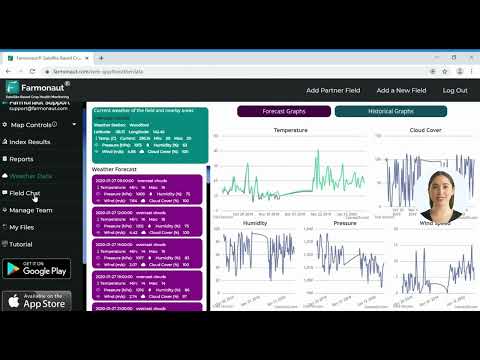Global Prime Power Generator Market: Trends, Growth Drivers, and Future Outlook 2024-2033
In our rapidly evolving world, the demand for reliable and efficient power solutions continues to grow. The global prime power generator market stands at the forefront of this energy revolution, poised for significant expansion in the coming decade. As we delve into the intricacies of this dynamic industry, we’ll explore the trends, growth drivers, and future outlook that are shaping the landscape of industrial power solutions from 2024 to 2033.

“The global prime power generator market is projected to double from $17.43 billion in 2024 to $35.22 billion by 2033.”
Market Overview and Growth Projections
The prime power generator market is experiencing a remarkable trajectory of growth. According to our comprehensive analysis, the market value is expected to surge from USD 17.43 billion in 2024 to an impressive USD 35.22 billion by 2033. This growth represents a compound annual growth rate (CAGR) of 8.13%, highlighting the robust demand for reliable power solutions across various sectors.
As we navigate through this expansive market landscape, it’s crucial to understand the factors driving this significant growth. From the rapid pace of industrialization to the increasing need for uninterrupted power supply in critical sectors, the prime power generator market is influenced by a complex interplay of global trends and regional dynamics.
Key Growth Drivers
- Industrialization and Urbanization: The ongoing wave of industrialization, particularly in developing nations, is a primary catalyst for market growth. As cities expand and industries proliferate, the demand for reliable power sources intensifies.
- Remote Area Power Solutions: In many parts of the world, access to the main power grid remains a challenge. Prime power generators offer a vital solution for remote industrial operations, telecommunications infrastructure, and rural electrification projects.
- Renewable Energy Integration: The global shift towards cleaner energy sources has created a unique opportunity for prime power generators. These systems play a crucial role in stabilizing power supply when integrated with variable renewable sources like wind and solar.
- Critical Infrastructure Support: Sectors such as healthcare, data centers, and emergency services require a constant, uninterrupted power supply. Prime power generators are essential in ensuring operational continuity in these critical areas.
- Technological Advancements: Innovations in generator efficiency, fuel consumption, and emissions reduction are making these power solutions more attractive to a broader range of industries.
To gain deeper insights into the agricultural applications of advanced technologies, similar to those driving the prime power generator market, we recommend exploring Farmonaut’s innovative solutions:
Regional Market Dynamics
The global prime power generator market exhibits distinct regional characteristics, each influenced by local economic conditions, regulatory environments, and energy needs:
- North America: A mature market with steady demand driven by the need for backup power in critical infrastructure and ongoing industrial expansion.
- Europe: Stringent environmental regulations are shaping the market, with a focus on low-emission and high-efficiency generators.
- Asia-Pacific: The fastest-growing region, fueled by rapid industrialization, urbanization, and the need to bridge power supply gaps in emerging economies.
- Latin America, Middle East, and Africa (LAMEA): Growing demand in sectors such as oil & gas, mining, and telecommunications is driving market expansion in these regions.
Market Challenges and Opportunities
While the prime power generator market is poised for significant growth, it also faces several challenges:
- Environmental Concerns: Increasing pressure to reduce carbon emissions is pushing the industry towards cleaner fuel options and more efficient designs.
- Supply Chain Disruptions: The COVID-19 pandemic highlighted vulnerabilities in global supply chains, affecting production and delivery timelines.
- Fluctuating Fuel Prices: Volatility in fuel markets can impact operational costs and market demand for different generator types.
However, these challenges also present opportunities for innovation and market differentiation:
- Hybrid Solutions: Integrating renewable energy sources with traditional generators to create more sustainable and cost-effective power systems.
- Smart Grid Integration: Developing generators that can seamlessly interact with smart grid systems, enhancing overall power distribution efficiency.
- Remote Monitoring and Predictive Maintenance: Utilizing IoT and AI technologies to improve generator performance and reduce downtime.
“Asia-Pacific is the fastest-growing market for prime power generators due to rapid industrialization and increasing energy demand.”
Technological Advancements Shaping the Future
The prime power generator market is experiencing a technological revolution, driven by the need for more efficient, reliable, and environmentally friendly power solutions. Key advancements include:
- Improved Fuel Efficiency: Next-generation generators are designed to maximize fuel utilization, reducing operational costs and environmental impact.
- Emission Control Technologies: Advanced catalytic converters and exhaust treatment systems are being integrated to meet stringent emission standards.
- Digital Integration: Smart generators equipped with IoT sensors and connectivity features enable real-time monitoring and predictive maintenance.
- Modular and Scalable Designs: Flexible generator systems that can be easily scaled to meet changing power demands are gaining popularity.
For those interested in cutting-edge agricultural technologies that parallel these advancements, Farmonaut offers innovative solutions:
Impact of Renewable Energy Integration
The global shift towards renewable energy sources is having a profound impact on the prime power generator market. While this transition might seem to pose a threat to traditional generator systems, it’s actually creating new opportunities:
- Hybrid Power Systems: Combining prime power generators with renewable sources like solar and wind to create more reliable and sustainable energy solutions.
- Grid Stabilization: Using generators to provide backup power and maintain grid stability when renewable sources are intermittent.
- Microgrids: Integrating generators into microgrid systems to enhance energy independence and resilience in remote areas or critical facilities.
Market Segmentation and Key Applications
The prime power generator market can be segmented based on various factors, including power rating, fuel type, and end-user industry. Understanding these segments is crucial for stakeholders looking to target specific market niches:
Power Rating Segments:
- Below 100 kVA
- 100-350 kVA
- 350-1000 kVA
- Above 1000 kVA
Fuel Type Segments:
- Diesel Generators
- Natural Gas Generators
- Other Fuel Types (e.g., Propane, Biogas)
Key Application Sectors:
- Industrial: Manufacturing facilities, mining operations, and oil & gas installations.
- Commercial: Data centers, hospitals, and large office complexes.
- Residential: High-end residential complexes and off-grid homes.
- Utilities: Power plants and grid support applications.
- Others: Including agriculture, construction, and events.
For those interested in agricultural applications of advanced technologies, Farmonaut provides innovative solutions that can complement power generation in rural areas:
Explore Farmonaut’s API Solutions
Competitive Landscape and Market Players
The global prime power generator market is characterized by intense competition, with several key players dominating the industry. These companies are continuously innovating to maintain their market position and meet evolving customer demands:
- Established Global Players: Companies with a long history in power generation, offering a wide range of generator solutions across various power ratings and fuel types.
- Regional Specialists: Firms that focus on specific geographic markets, often with products tailored to local needs and regulations.
- Emerging Innovators: New entrants bringing disruptive technologies to the market, such as hybrid systems or advanced control technologies.
Key strategies employed by market leaders include:
- Investment in R&D to develop more efficient and environmentally friendly generators
- Strategic partnerships and acquisitions to expand market reach and technological capabilities
- Focus on after-sales services and customer support to build long-term relationships
- Expansion into emerging markets to capitalize on growing energy demands
Regulatory Landscape and Environmental Considerations
The prime power generator market is significantly influenced by regulatory frameworks and environmental policies. As global concerns about climate change intensify, governments worldwide are implementing stricter regulations on emissions and energy efficiency:
- Emission Standards: Increasingly stringent regulations on exhaust emissions are driving manufacturers to develop cleaner generator technologies.
- Noise Pollution Regulations: Many jurisdictions have implemented noise level restrictions, particularly for generators used in urban areas.
- Energy Efficiency Requirements: Governments are setting higher standards for fuel efficiency and overall generator performance.
- Renewable Energy Mandates: Some regions require a certain percentage of power to come from renewable sources, affecting the design and deployment of generator systems.
These regulatory challenges are pushing the industry towards innovation and sustainability, creating opportunities for companies that can develop compliant and efficient solutions.
Future Outlook and Market Projections
As we look towards 2033, the prime power generator market is poised for continued growth and transformation. Several key trends are expected to shape the industry’s future:
- Increased Adoption of Clean Technologies: A shift towards cleaner fuels and hybrid systems that integrate renewable energy sources.
- Smart Grid Integration: More sophisticated generator systems that can communicate and integrate seamlessly with smart grid infrastructure.
- Customization and Flexibility: Growing demand for modular and scalable generator solutions that can adapt to changing power needs.
- Focus on Energy Storage: Integration of advanced energy storage technologies to enhance the reliability and efficiency of generator systems.
- Emerging Market Growth: Continued expansion in developing regions, driven by industrialization and infrastructure development.
| Year | Projected Market Size (USD Billion) | Key Growth Drivers |
|---|---|---|
| 2024 | 17.43 | Industrialization, Urbanization |
| 2028 | 23.85 | Renewable Energy Integration, Remote Area Power Solutions |
| 2033 | 35.22 | Technological Advancements, Critical Infrastructure Support |
For those interested in staying at the forefront of technological advancements in related fields, Farmonaut offers cutting-edge solutions in agricultural technology:
Explore Farmonaut’s API Developer Docs
Challenges and Opportunities in the Prime Power Generator Market
As the market evolves, industry players must navigate a complex landscape of challenges and opportunities:
Challenges:
- Environmental Regulations: Stricter emission standards require continuous innovation in engine technology and exhaust treatment systems.
- Fluctuating Fuel Prices: Volatility in fuel markets can impact operational costs and influence customer decisions.
- Competition from Renewable Energy: The growing adoption of renewable energy sources could potentially reduce demand for traditional generators.
- Supply Chain Disruptions: Global events like the COVID-19 pandemic have highlighted vulnerabilities in supply chains, affecting production and delivery timelines.
Opportunities:
- Hybrid and Microgrid Solutions: Developing integrated power systems that combine generators with renewable energy sources and energy storage technologies.
- Digitalization and IoT Integration: Implementing advanced monitoring and control systems to enhance generator performance and reliability.
- Expansion in Emerging Markets: Tapping into the growing energy needs of developing countries, particularly in Asia and Africa.
- Focus on Sustainable Fuels: Exploring and developing generators that can run on biofuels or hydrogen, aligning with global sustainability goals.
For those interested in leveraging technology to drive sustainable practices in agriculture, similar to the innovations in the power generation sector, Farmonaut offers valuable solutions:
Earn With Farmonaut: Affiliate Program
Earn 20% recurring commission with Farmonaut’s affiliate program by sharing your promo code and helping farmers save 10%. Onboard 10 Elite farmers monthly to earn a minimum of $148,000 annually—start now and grow your income!
The Role of Prime Power Generators in Critical Sectors
Prime power generators play a crucial role in ensuring operational continuity across various critical sectors:
- Healthcare: Hospitals and medical facilities rely on uninterrupted power supply for life-saving equipment and operations.
- Data Centers: With the increasing importance of digital infrastructure, data centers require reliable power sources to maintain uptime and protect sensitive information.
- Telecommunications: Mobile networks and internet service providers use generators to ensure continuous communication, especially in remote areas or during emergencies.
- Manufacturing: Industrial processes often require consistent power supply to maintain production quality and prevent costly downtimes.
- Emergency Services: First responders and emergency management centers depend on reliable power for their operations during crises.
The critical nature of these applications underscores the importance of ongoing innovation and reliability in the prime power generator market.
Sustainability and Environmental Considerations
As global focus on sustainability intensifies, the prime power generator industry is adapting to meet environmental challenges:
- Eco-friendly Fuel Options: Development of generators that can run on biodiesel, natural gas, or other low-emission fuels.
- Improved Efficiency: Advances in engine design and control systems to maximize fuel efficiency and reduce waste.
- Noise Reduction Technologies: Implementing advanced sound insulation and vibration control to minimize environmental impact.
- Life Cycle Assessment: Considering the environmental impact of generators from production to end-of-life, leading to more sustainable manufacturing processes.
- Circular Economy Initiatives: Exploring ways to refurbish, recycle, or repurpose generator components to reduce waste.
These sustainability efforts not only address environmental concerns but also often result in cost savings and improved performance for end-users.

The Impact of Digitalization on the Prime Power Generator Market
Digitalization is revolutionizing the prime power generator industry, offering new capabilities and efficiencies:
- Remote Monitoring and Control: Advanced IoT sensors and connectivity allow for real-time monitoring of generator performance, enabling predictive maintenance and remote troubleshooting.
- Data Analytics: Collecting and analyzing operational data helps optimize generator performance, predict failures, and improve overall efficiency.
- Automated Load Management: Smart systems can automatically adjust generator output based on real-time demand, improving fuel efficiency and reducing wear.
- Digital Twins: Virtual replicas of physical generators allow for simulation and testing, enhancing design processes and operational strategies.
- Blockchain for Energy Trading: Emerging blockchain technologies could enable peer-to-peer energy trading in microgrid systems that include prime power generators.
These digital innovations are not only enhancing the performance and reliability of prime power generators but also opening up new business models and service offerings in the industry.
Global Market Dynamics and Regional Variations
The prime power generator market exhibits distinct characteristics across different regions, influenced by local economic conditions, regulatory environments, and energy needs:
- North America: A mature market with a focus on high-efficiency and low-emission generators, driven by stringent environmental regulations and the need for reliable backup power in critical infrastructure.
- Europe: Emphasis on renewable energy integration and smart grid technologies, with a growing market for hybrid generator systems that can work in conjunction with solar and wind power.
- Asia-Pacific: The fastest-growing market, fueled by rapid industrialization, urbanization, and the need to bridge power supply gaps in emerging economies. Countries like China and India are key drivers of growth in this region.
- Latin America: Increasing demand in sectors such as mining, oil & gas, and telecommunications, with a growing focus on generators that can operate in challenging environments.
- Middle East and Africa: Significant opportunities in off-grid power generation for remote industrial operations and rural electrification projects, with a rising interest in solar-diesel hybrid systems.
Understanding these regional dynamics is crucial for companies looking to expand their global footprint in the prime power generator market.
Conclusion: Navigating the Future of Prime Power Generation
As we look towards 2033, the global prime power generator market stands at a pivotal point of transformation. The convergence of technological innovation, environmental consciousness, and evolving energy needs is reshaping the industry landscape. Key takeaways include:
- The market is projected to grow significantly, reaching USD 35.22 billion by 2033, driven by industrialization, urbanization, and the need for reliable power in critical sectors.
- Technological advancements, particularly in digitalization and hybrid systems, are enhancing generator efficiency and reliability while reducing environmental impact.
- Sustainability and environmental considerations are becoming increasingly central to product development and market strategies.
- Regional market dynamics vary, with emerging economies in Asia-Pacific presenting the most robust growth opportunities.
- The integration of prime power generators with renewable energy sources and smart grid technologies is opening new avenues for innovation and market expansion.
For companies operating in this space, success will hinge on the ability to innovate, adapt to regulatory changes, and meet the evolving needs of a diverse global market. As the energy landscape continues to evolve, prime power generators will play a crucial role in ensuring reliable, efficient, and sustainable power supply across various sectors and geographies.
The future of the prime power generator market is bright, filled with challenges and opportunities that will drive continued innovation and growth in the years to come.
Frequently Asked Questions (FAQ)
- What is a prime power generator?
A prime power generator is a continuous power source designed to operate as the primary electricity supply, often in areas without reliable grid access or for applications requiring uninterrupted power. - How is the prime power generator market expected to grow by 2033?
The market is projected to grow from USD 17.43 billion in 2024 to USD 35.22 billion by 2033, at a CAGR of 8.13%. - What are the key drivers of growth in the prime power generator market?
Key drivers include industrialization, urbanization, the need for reliable power in remote areas, and the integration of renewable energy sources. - Which region is showing the fastest growth in the prime power generator market?
The Asia-Pacific region is experiencing the fastest growth, driven by rapid industrialization and increasing energy demand in countries like China and India. - How is environmental sustainability impacting the prime power generator industry?
Environmental concerns are driving the development of more efficient, lower-emission generators and the integration of hybrid systems that incorporate renewable energy sources. - What role does digitalization play in the prime power generator market?
Digitalization enables remote monitoring, predictive maintenance, and improved efficiency through data analytics and smart control systems. - How are prime power generators adapting to the rise of renewable energy?
Manufacturers are developing hybrid systems that integrate renewable sources like solar and wind, and creating generators that can stabilize power supply in conjunction with variable renewable sources. - What are the main challenges facing the prime power generator market?
Key challenges include stringent environmental regulations, fluctuating fuel prices, and competition from alternative energy sources. - Which industries are the primary users of prime power generators?
Major users include healthcare facilities, data centers, telecommunications, manufacturing, and remote industrial operations like mining and oil & gas. - How is the COVID-19 pandemic affecting the prime power generator market?
The pandemic has disrupted supply chains and project timelines but has also highlighted the importance of reliable power sources for critical infrastructure and remote operations.







